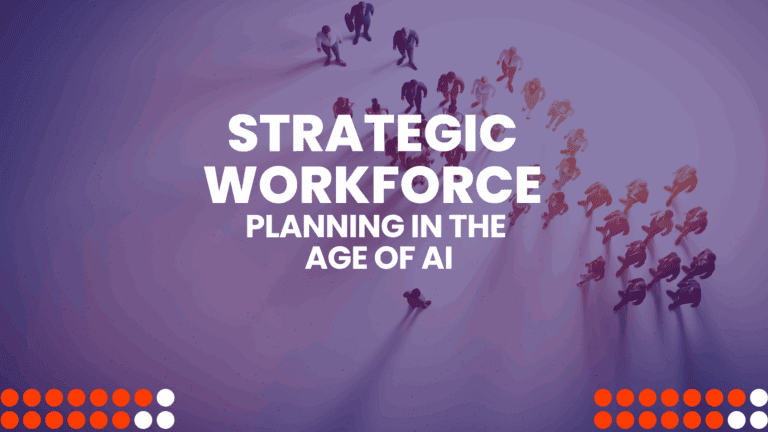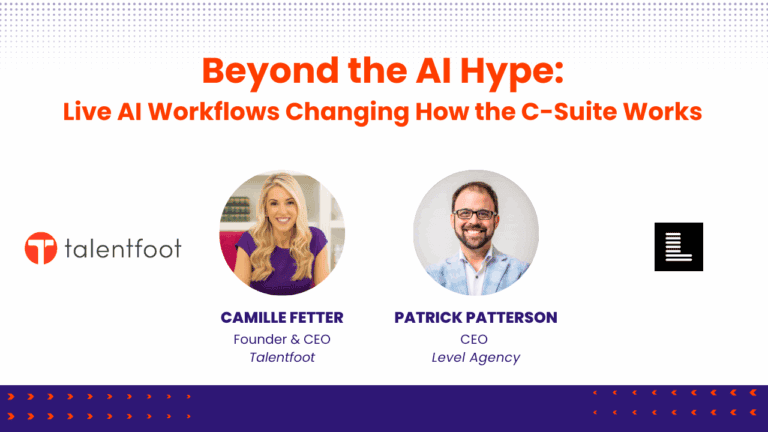Rethinking Work in the Age of AI: Webinar Recap
The world of work is undergoing rapid transformation. From shifting generational expectations to the surge of AI adoption and blended workforce models, leaders can no longer rely on “business as usual.” The organizations that adapt fastest, by rethinking talent strategy, skill readiness, and workforce design, will thrive.
This urgency set the stage for our recent webinar, How the Smartest Companies Are Rethinking Work, featuring Matt Moog (Founder & CEO, CareerBird) and moderated by Camille Fetter (Founder & CEO, Talentfoot). Together they explored how resilient organizations are navigating disruption and building future-ready teams.
You can view Matt’s slides here.
Recap & Key Takeaways
- Generational Expectations Are Shaping Workforces
Millennials and Gen Z now make up the majority of the workforce, and their priorities differ sharply from past generations: flexibility, career development, mission alignment, and feedback.
They expect remote and flexible work, value-driven organizations, and modern tools:
“The importance of the mission of the organization, its commitment to the community and to the environment, and aligning with employee values is much stronger with younger generations. If your technology looks dated or clunky, that alone can be a reason people choose to leave.” — Matt Moog
Recognition is critical:
“Do you have a good feedback and recognition program? Research shows this has become increasingly important. Lack of recognition is one of the reasons newer generations are quick to move on.” — Matt Moog
And above all, career development is the deciding factor:
“The number one reason people leave organizations is a lack of career development. Even on day one, new hires are asking: how do I get promoted? What are you doing to invest in my skills?” — Matt Moog
As Camille noted, top candidates consistently ask about learning and development before making a move, often prioritizing growth opportunities over compensation.
- Career Pathing Must Be Done Right
When career paths are unclear, inconsistent, or overly slow, disengagement sets in and attrition follows. The hidden cost of losing an employee can be 2–3x their salary once you factor in lost productivity, backfilling, and ramp-up time.
“If you don’t have a clear career path, if you don’t have clear criteria, if you don’t have a clear process, then you’re going to take a lot of time and you’re going to disappoint people whose expectations have been building.” — Matt Moog
Clarity, fairness, and timely promotion processes are critical to retaining ambitious talent.
- Hybrid & Distributed Work Is Here to Stay
Today, 60% of knowledge workers are hybrid, 25% fully remote, and 15% fully on-site. Nearly 90% of employees rate flexibility as very important.
Remote work has delivered deep-focus productivity and lower attrition, but leaders must balance flexibility with opportunities for collaboration, culture, and relationship-building. As Moog noted, distributed models work “incredibly well” when designed intentionally.
- Building Agile, Skills-First Workforces
Static job descriptions no longer match the speed of change. Forward-thinking organizations are:
- Designing jobs around skills and outcomes, not static titles.
- Leveraging fractional, gig, and global talent alongside full-time employees.
- Maintaining talent databases to understand skills in-house and flex as needs evolve.
“Jobs may be going away in the age of AI, but the work remains. Organizations must break jobs into collections of skills and capabilities that flex with the situation.” — Matt Moog
- Continuous Learning as a Strategic Advantage
Most organizations still default to compliance or manager training. But modern learning must be on-demand, applied, and continuous.
Podcasts, online courses, and even peer-to-peer teaching are powerful tools. In fact, research shows teaching others drives up to 90% retention of knowledge
Camille added that candidates today evaluate employers based on how much they invest in learning, often leaving roles every 2–3 years if growth stalls
- AI Is Reshaping Talent Strategy
AI is redefining how work gets done and companies are already hiring specifically for AI fluency and change management skills, most often at the director level.
Moog recommended a two-tier approach:
- Ensure all employees gain baseline familiarity with AI tools.
- Build an “AI strike force” of domain experts to pilot and scale use cases.
Camille noted Talentfoot has seen a 3x increase in demand for AI-focused talent this month alone, underscoring how quickly this shift is happening.
- HR Must Have a Seat at the Table
With 25% of workforce skills expected to change in the next 12 months, and some roles seeing up to 75% change, HR can no longer operate as a back-office function.
Workforce strategy, skills-first hiring, and AI adoption must be standing items on every executive and board agenda.
Final Word
The future of work is not about static jobs, it’s about dynamic skills, agile talent models, and continuous learning. Organizations that invest in workforce development now will gain a lasting competitive advantage.
As Matt Moog emphasized:
“Twenty-five percent of all skills in the U.S. workforce will change in the next 12 months. In some roles, it’s 75%. The pace of change is unlike anything we’ve seen before.”
His advice for leaders navigating this transformation?
“Continuous learning is the only true competitive advantage for an organization.” — Matt Moog
Is Your Workforce Ready for the Future?
The rise of AI and shifting workforce expectations is not optional, it is redefining how companies attract, retain, and grow talent.
At Talentfoot, we specialize in helping organizations hire forward-thinking executives who can lead through disruption across sales, marketing, technology, Accounting and Finance, Operations and HR.
If you’re unsure whether your team is equipped to adapt and thrive in this new world of work, let’s talk. Together, we can ensure your company is not just prepared for the future of work but leading it.




